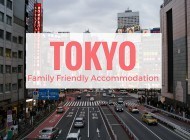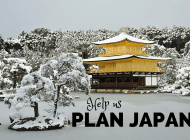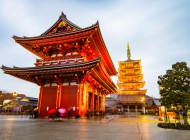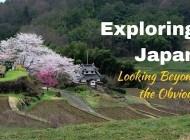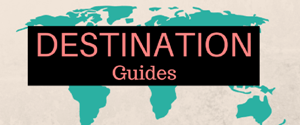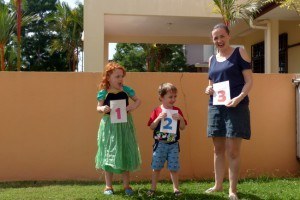When it comes to “brand value” and generating food and cultural trends, few countries can match Japan. It would have to be in the top five countries for generating culinary and cultural artifacts that would be recognised elsewhere.
I’ve long wanted to visit Japan. I’ve been talking about it now for quite a while, discussing where and when to go. I was really keen on visiting Hokkaido, especially Niseko as a family. After coming across the Vacation Niseko page as it looked like a great place to go.
However as things panned out I had to travel solo and – thanks to cheap flights from Cebu – had a three day window to experience all the Japanese clichés I could manage. Flying into Narita airport meant there was really just one place to go: Tokyo.
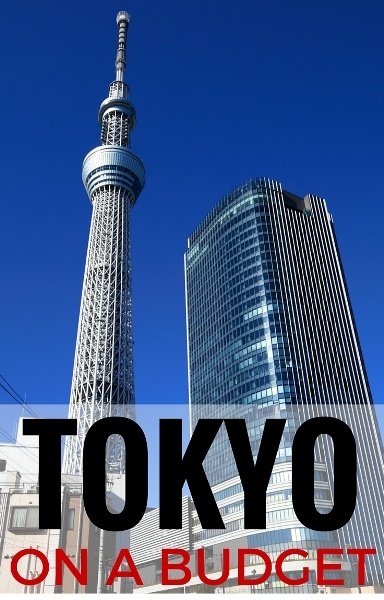
Tokyo has a reputation of being an expensive city. However, a little research and a tight budget made me think about just how cheap a stay in Tokyo could be…
Contents
Cheap things to do in Tokyo
The list of the best things to see in Tokyo is huge. A city of 36 million people (for the greater metropolitan area) is going to have its share of attractions.
If you’re sight seeing in Tokyo and looking to keep the costs down then these Tokyo attractions are some of the cheapest things to see and do in Tokyo. If you’re wondering what to see in Tokyo and get change from a couple of 1000 yen notes then here’s some ideas. This isn’t an exhaustive list of the top attractions in Tokyo that don’t cost much but it’s a good start.
Edo Tokyo Museum
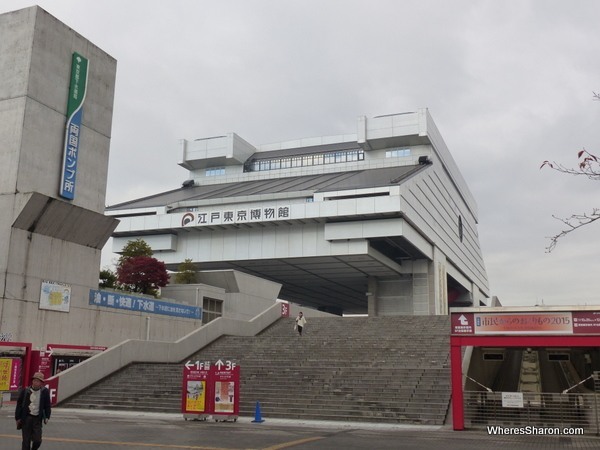
The Edo Tokyo Museum. It’s designed to look like an old style Japanese warehouse, apparently.
Located in a large concrete building that apparently represents an old warehouse, this is a great museum that covers Tokyo’s evolution from the Shogun’s capital of Edo to the mega city of today. I found it a great way to start my Tokyo visit as it gave some background and context for my Tokyo explorations.
The museum covers what Tokyo used to look like, how people lived (great if you were in the upper classes, otherwise maybe not so great), how they shopped, got their water, what they ate and wore.
There’s some great replica buildings and houses – to enter the exhibits you actually cross a large indoor wooden bridge – and some awesome models/dioramas with incredible details like thousands of little people in them. Some of the displays are interactive – you can sit in a palanquin or rickshaw, look in a little shop and try and carry a load of fish. The dioramas are like a big Where’s Wally with lots of things to try and spot amongst the action at each one (they weren’t easy either).
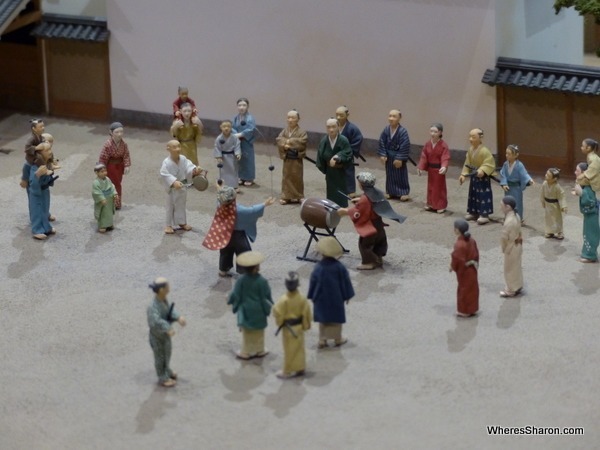
It took me ages to spot the drummer in one scene…these models are really small.
There are two levels of displays and the lower one in particular is quite large. I spent ages here as a result and really enjoyed it (admittedly it’s my type of thing). I can see kids of most ages enjoying it a lot as well.
There’s a lot of school groups passing through so I suggest visit early or start around or after 3pm.
The Edo Tokyo Museum is a few minutes away from exit A4 of the Ryogoku Metro Station (on the Toei Oedo Subway Line) or a five minute walk from the Ryogoku JR station (take the Sobu Line).
Sumo Museum
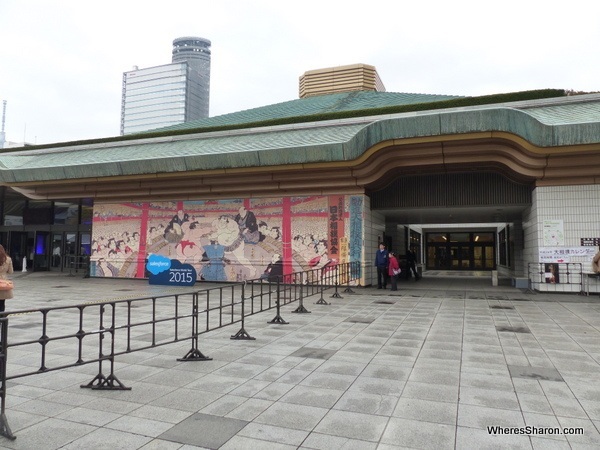
Entrance to the sumo Museum at the Ryogoku Stadium.
If you’re interested in Sumo wrestling then this small museum might be of interest. The museum is located at the bottom of the Ryogoku stadium where Tokyo’s sumo wrestling tournaments are held.
Featuring items, photos and displays from the past, the one room exhibit is mainly taken up with a temporary focus (when I was there it was the war’s impact on sumo wrestling). There was a video featuring various aspects of a wrestlers life (like how they get their hair done before a fight).
There isn’t much here and given there’s not much English (there’s just enough) ten minutes might be all you need. I liked what was here (I’m interested in sumo wrestling) but I wish there was more of it and was a little disappointed at the small scale of the place.
Kids and strollers aren’t a problem if you want to bring them.
The Ryogoku stadium is located next to the Edo Tokyo Museum and the entrance you need is located on the opposite side (close to the JR line tracks). It’s very close to the Ryogoku JR station (Sobu Line) and about five minutes from exit A4 of the Ryogoku Subway Station (on the Toei Oedo Subway Line).
Sengakuji Temple (Temple of the 47 Ronin)
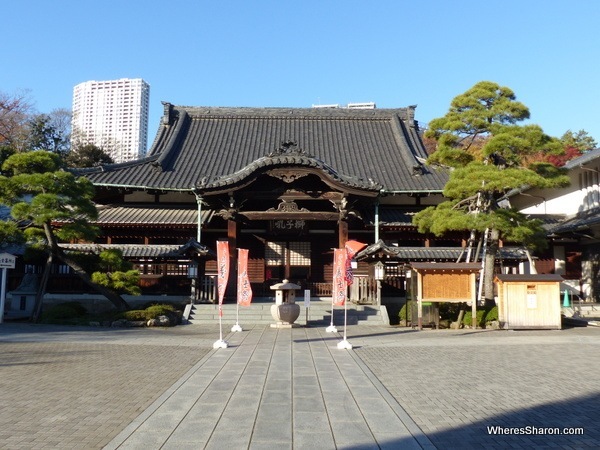
The Sengakuji Shrine, aka the Shrine of the 47 Ronin.
If you’re history inclined, like I am, or are interested in checking out a Shinto shrine then the Sengakuji Temple might be for you.
This temple is famous for being the resting place of the 47 ronin. The 47 Ronin are famous for their methodically planned act of revenge on the man they blamed for the death of their master and are popular folk heroes in Japan. After cutting off their target’s head they paraded through the streets with it, ending up at this temple where the then killed themselves. Like proper samurai.
The shrine is small but picturesque. The 47 Ronin are buried off to the left of the shrine. There’s a small museum dedicated to the Ronin but it was closed when I got there (admission 500 yen for adults, 100 for kids). You’re likely to have the place to yourself if visiting on a weekday not close to December 15th (when the shrine’s festival is).
There’s not much to it but if you’re the sort of person that goes to a cemetery because someone famous is buried there (who isn’t?) then, like me, this a cool little attraction.
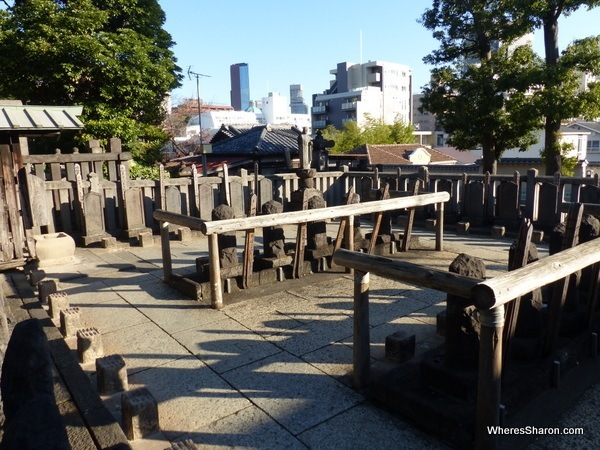
Graves of the 47 Ronin.
The shrine is located 400 metres from Sengajuki metro station on the Asakura Line (follow the signs from the exit). There is no entry fee.
Meiji Jingu Shrine
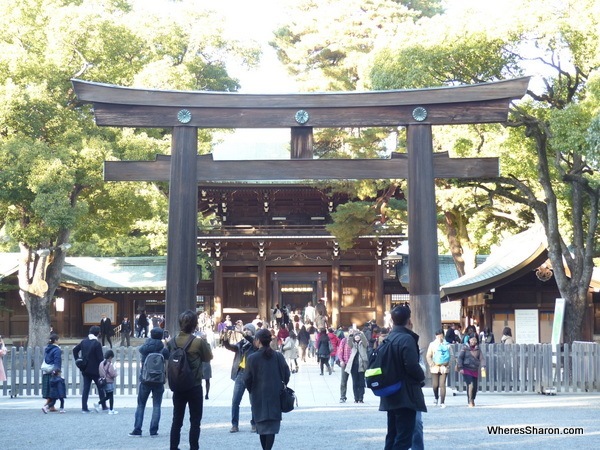
The entrance to the Meiji Shrine.
The Meiji Jingu Shrine was built to honour the late Emperor Meiji, who gets the credit for ending the reign of the Shogunate and modernising Japan, and his wife. Completed in 1920, it was destroyed during World War II then rebuilt after the war.
The cool thing about the shrine is that its in a large 157 hectare wood with lots of trees. There is a garden area you can visit separately (for a fee).
There’s a few interesting sites along with the temple. There’s a wall of sake barrels, with barrels donated annually by producers to honour the late Emperor. And the main memorial hall is where the Meiji constitution, outlining the new, post-feudal Japan, was written here in 1888 (it predates the rest of the structure). Also in the grounds of the shrine is the largest wooden torii (temple gate) in the country.
The Meiji Shrine is popular for weddings, especially on weekends. There were a lot of ladies and young kids in kimonos when I was there. Indeed, it was probably the best part of the shrine visit. Just being among all the trees and having a break from all the concrete was pleasant, though.
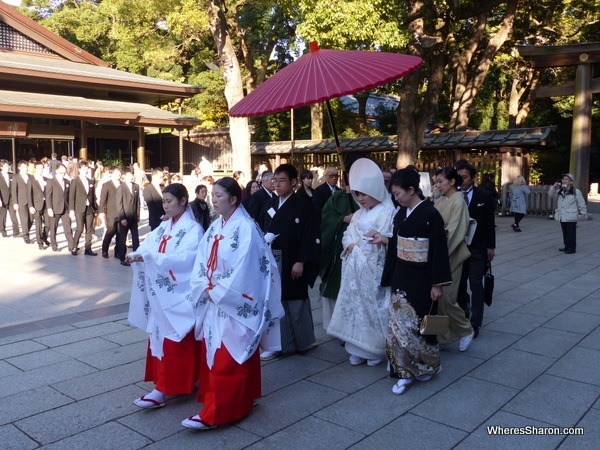
A shinto wedding ceremony in process at the Meiji Shrine during my visit.
The shrine itself is simple and elegant but its all the activity around it that proved to be more interesting. Seeing the wedding ceremonies and the kimonos (which are understandably thin on the ground elsewhere) made me glad I came here.
Visiting the Shrine grounds are free, except for part of a more formal garden, which is 500 yen to enter. Meiji-jingumae subway station on the Chiyoda line and the Fukutoshin line will take you right to the entrance.
East Imperial Gardens
Cultivated in what was the Shogun’s fortress in the centre of the city is the East Imperial Gardens. Parts of the fortress, including the donjon (the strongest building, like a castle’s keep), were damaged in earthquakes in the mid 17th century and never rebuilt.
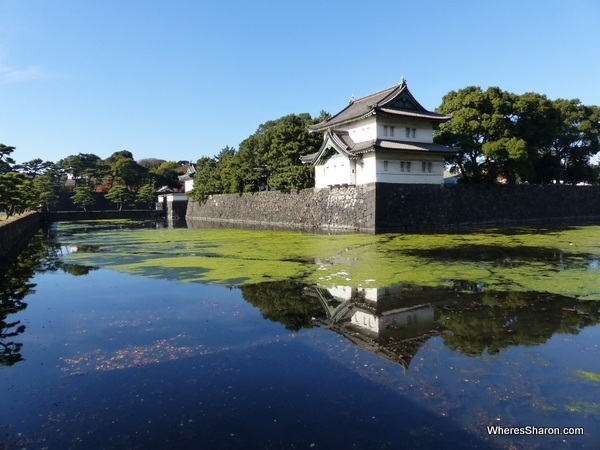
The moat, outer wall and a former guard tower of the Shogun’s fortress than now form part of the East Imperial Gardens.
Part of what survived went on to become the Imperial Palace (which you can visit on certain days if you book ahead) after the Meiji restoration and the rest became the East Imperial Gardens, a lovely spot to wander around and enjoy.
There are some preserved structures from the Shogun’s palace, including the massive stone walls. The highlight is probably the base of the donjon, which was never rebuilt and the much of the stone base remains. You can climb to the top of the base, which gives a nice view of the gardens.
The gardens themselves were quite pretty and autumn was a great time of year to visit as the deep reds and oranges of some of the trees was stunning. This helped make up for the lack of fortress-y bits (there’s the walls and some guardhouses) which I was hoping to see more of.
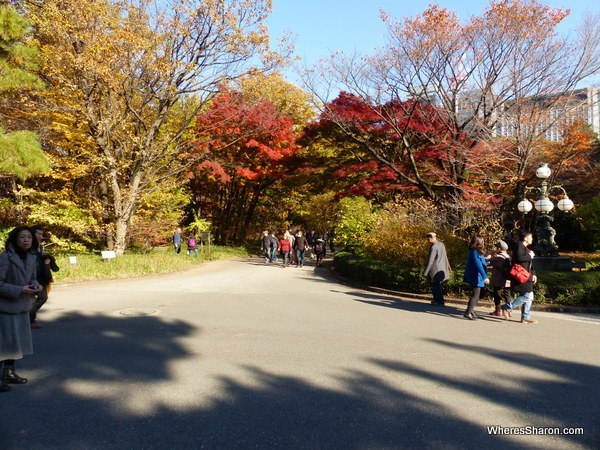
Beautiful autumnal foliage in the gardens.
There’s a small museum in the gardens featuring a portion of the Imperial collection of artworks and valuable looking stuff donated by the Emperor. It was small and crowded and at the risk of being a philistine I’ll go out and say that the museum isn’t worth going out of your way for.
The gardens are closed on Wednesdays and Fridays and other days for state occasions and the like. The gardens are as close to the centre of Tokyo as you can get and thus there are many metro stations within short walking distance to one of the entrances. Entry is free.
Ueno Park
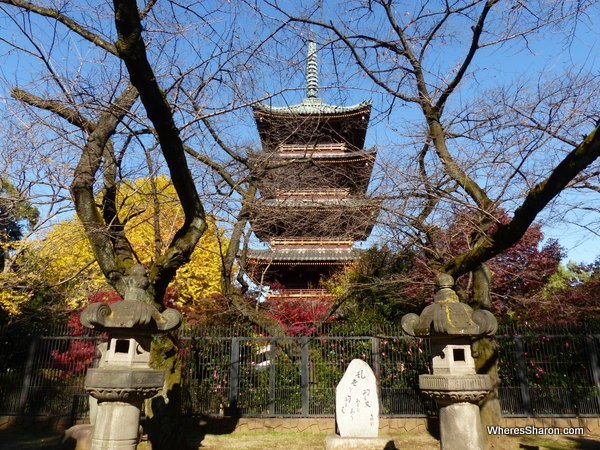
The five story Pagoda in Ueno park. It is actually surrounded by the zoo so you can’t go right up to it, sadly.
Ueno Park is a massive park and attraction that also contains several other attractions as well.
The prime attraction for kids is the Tokyo Zoo, which is quite large (entry to the zoo is 600 yen, 200 yen for 12 to 18, and under 12s are free). There are also five museums (of which I visited none) including the National Tokyo Museum, the National Science Museum and the National Museum of Western Art, Tokyo.
On top of all that it has some great trees and gardens and is a popular spot to see the cherry blossoms when in season. There’s a small but beautiful Buddhist temple, a five story pagoda (which you can see but can’t go into) and some lakes.
These’s some open space for running around in and a playground not far from the zoo entrance.
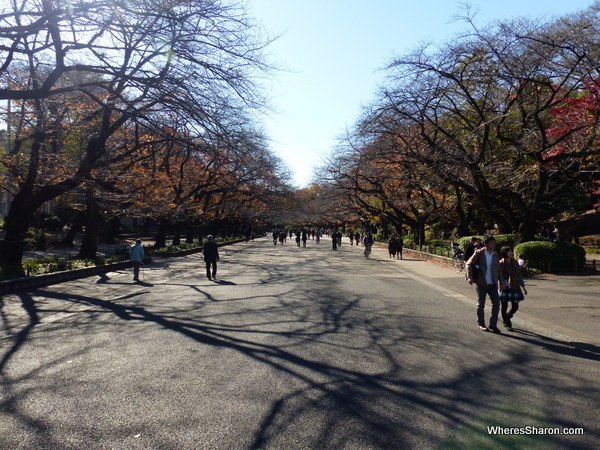
Cherry trees in Ueno Park – no cherry blossoms for me…
It’s a multi use park and is very busy on weekends. It is great for people watching and catching street performers. You could easily spend all day here; there is a lot to see (maybe not all of it great for kids). There are some cafes and restaurants to rest and refuel at between attractions.
If you’re after a park to play and blow off some steam, or just to relax and watch people, then I reckon Ueno Park is the best in Tokyo. I spent a lot longer here than I planned because there was so much going on. If I wasn’t trying to have fit so much in then I would have stayed here much longer.
World Panchinko Museum
Ever tempted to try and play a game of Panchinko but had no idea where to start? This place is for you, with games from 100 yen and someone to guide you on your first game.
Panchinko is popular game in Japan, and its a bit of a cross between pinball and a video game or pokie/slot machine. Players win tokens which can be exchanged for gifts or in some places, money. There are parlours all over Tokyo.
Truth be told the World Panchinko Museum isn’t a museum, rather a small section of a regular Panchinko parlour for newcomers with English speaking staff to help. After my game I’m none the wiser about how to play other than there’s lots of balls flying about but it was fun trying. Now I’ve played it, it’s out of my system so thanks World Panchinko Musuem!
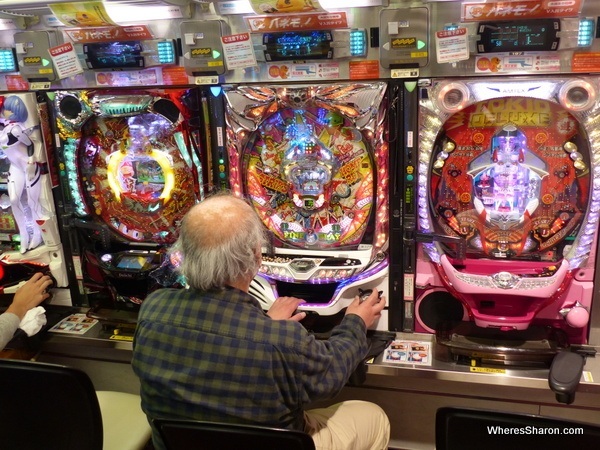
A typical panchinko machine. Can you figure it out? No…me neither…
Be warned, Panchinko parlours are very loud places. Definitely not for kids.
The museum is close to the Higashi-ginza subway station on the Asakura and Hibiya lines.
Tsujiki Fish Market
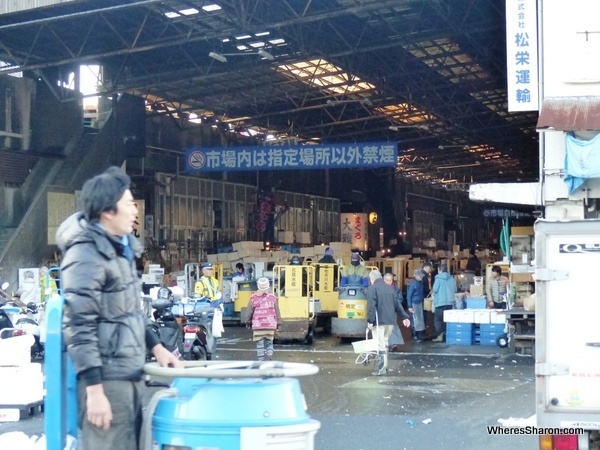
The Tsujiki Fish Markets. A very bustling and active place.
Not your usual attraction, the Tsujiki Fish markets are famous for their tuna auctions, where some of the world’s best tuna is bought and sold. 120 extremely keen visitors are permitted to see an auction take place – 60 to each of the auctions at 5:20am and 5:50am. Passes can be obtained from the market’s visitor office on a first come, first served basis – no online reservations. According to reports you need to be there no later than 4am to get in.
You can freely visit when much of the bigger action has passed and things quieten down at 9am. There’s still plenty of activity at this time though. The market is a bustling place throughout the morning with a slew of powered trolleys and bikes whizzing around. There’s so much traffic that I’d be wary of bringing kids just because of it. These fish sellers need to get where they are going and put the minimum effort required to avoid people.
I was not inspired to be up in time for the tuna auctions. Instead I was drawn by the sushi restaurants nearby in building six (to the right entrance of the main building when you face it – look for queues if in doubt). These restaurants serve the freshest sushi going around, sold that morning. Two restaurants in particular eschew any frozen products.
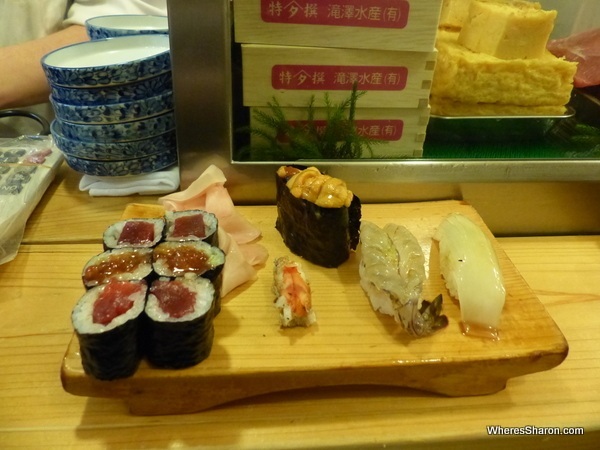
Part of my sushi set. Pieces kept coming as I ate them. Gee, it was good sushi!
These two are popular – there were lines already at 6am, and I queued for half an hour after starting to line up by 6:30am. When I left the line was forty people long for the place I went to – Diawa Zhusi. Having had the sushi it is easy to understand why – it was very, very good. You can buy a set at Diawa Zhusi for 3800 yen and/or buy by the piece. There are cheaper options on the same row (the ones without the queues). For me, the queues were worth it.
There’s also an outer market, where fish and lots of other things are sold. It’s an interesting place to wander around and there are plenty of places to eat with no queues, including sushi places for much cheaper.
The fish market itself was interesting in the way markets are but the real thrill for me was the freshest of fresh sushi. If you like sushi or are a foodie then you won’t regret trying it.
Visiting the market (including the auctions) is free. The sushi will vary depending on the price and what you order. The market is slated to move to a new venue soon (it was meant to happen in 2014 but has been delayed).
Tsujikishijo subway station on the Odeo line is the closest station, with Higashi-ginza subway station on the Asakura and Hibiya lines and Tsujiki metro station on the Hibiya line less than 10 minutes walk away.
Yasukuni Shrine
Located in the centre of Tokyo, not far from the Kintanomaru Gardens is the controversial Yasukuni Shrine. This shrine, originally built in 1869 and rebuilt after the Second World War, is dedicated to Japan’s war dead (including civilian support workers) from the Bosin civil war onwards – each of whom is considered a deity. The shrine maintains a “book of souls” listing each person the shrine honours.
This includes Japanese found guilty of war crimes, including the 14 “Class A” war criminals. They were controversially added in 1978 even though none died in active service.
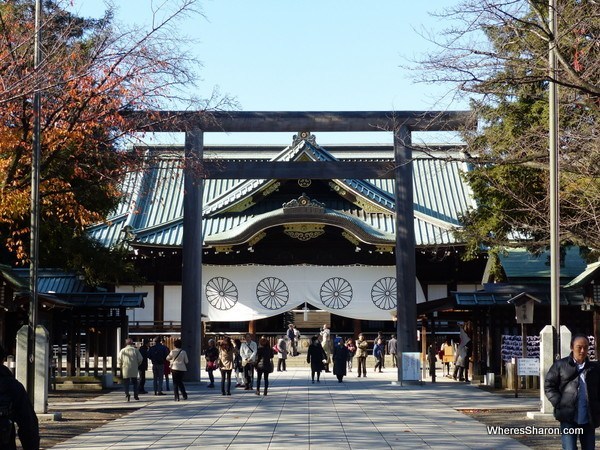
The sacred yet controversial Yasukuni Shrine.
There’s also a museum looking at Japan’s military history. There’s some cool things on display like a Zero fighter, a tank, some artillery and an engine used on the Thai-Burma railway. And there’s some ever appealing medieval samurai armour and weaponry to be seen, too, which is always cool to look at.
However most of the museum is taken up with later wars and provides its own share of controversy. History is presented from a unique Japanese perspective. This is most noticeable around the presentation of the war in China from 1931 and the war in the Pacific. There are mentions of “incidents” and plenty of self-serving justification for what happened.
There’s virtually no mention of atrocities (the Nanjing “Incident” is implicitly written off as no big deal) unless it justifies some course of action. Or Japanese were on the receiving end – then it’s a big deal. Japan is subtlety portrayed as striving for peace (Pearl Harbor? Regrettable but necessary…). It’s a very Japanese (and one sided) perspective on things to put it mildly.
Its been suggested that just visiting is condoning Japan’s continuing near-total denial of the horrors it inflicted. I don’t agree, unless you take what’s presented as fact and/or refuse to acknowledge what took place but isn’t mentioned.
Amongst all the Banzai! there’s still some focus on those who died in service of their Emperor and nation. I was moved by the bride dolls – dolls symbolising brides that the dead never got to have – made by the mothers of servicemen who never returned from war.
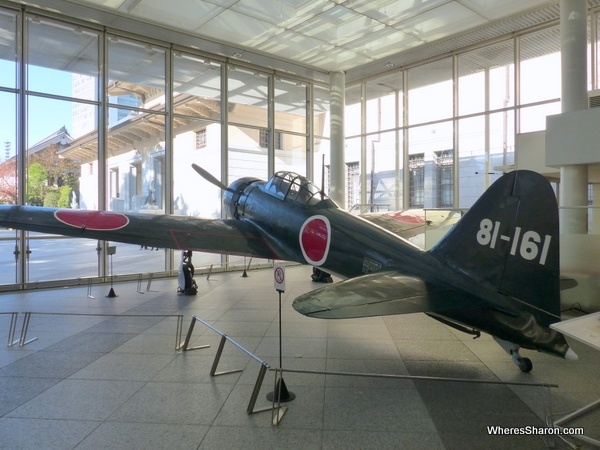
A Mitsubishi Zero fighter in the Yakusuni museum.
I wasn’t sure I should go but I’m glad I did. There’s a few cool things to see but most interesting of all is looking at history through someone’s weird and distorted glasses. I don’t think I’ve visited a place that’s so subtly pumped out revisionist propaganda.
Kudanshita metro station on the Shinjuku, Mita and Tozi lines is only a few minutes walk away. The musuem was 800 yen to enter.
Sentos
For a local experience, relax with a soak in a hot bath after a day of sightseeing. Japanese bath houses, called sentos (or onsen when fed from natural volcanic springs) are a product of a time when few had bathing facilities in their home. Thus the need for a communal bath house. There are over 1000 such bath houses still active in Tokyo, some in capsule hotels where you can buy a pass just for the sento part.
Enjoying the sentos was close to my Tokyo highlight. If you like pretending you’re a local then sitting around in the nude with a bunch of locals enjoying a hot bath is for you. I visited them twice a day if I could.
The rituals of the sentos are well documented, but in a nutshell you take off your shoes, then buy a ticket and maybe a small towel (if not included or you didn’t bring your own). Then you get undressed, put your clothes in a locker or basket and go into the next room where you wash.
The water in the furos (baths) is not changed per occupant (it’s like a pool) so you need to wash yourself very well before getting into the tub. You sit down at a little shower spot (on a stool) and then wash all of your body and hair really well.
The sentos I visited provided shampoo and body wash. The locals use these with abandon and get very soapy (covered in lather) washing every part of their body before rinsing everything off. It’s a major faux pas to introduce soap suds or dirt (or your towel) into the water.
The baths differ from sento to sento but will often have hot water around 40 degrees, maybe a cold furo as well or another hot furo with jets like a spa. You can bathe for as long as you like (or closing time, whichever comes first). The cost is 460 yen (less for under 18, free if 6 and under) – that’s a standard price across Tokyo. Towels cost 100 yen and a locker – if available – was 100 yen also.
sentoguides.info is a great resource to track down a sento near your route.
Tokyo For Kids
There is certainly lots to entertain kids in Tokyo. In addition to the attractions above, there’s plenty more attractions outside of the central Tokyo area. There’s Tokyo Disneyland and at the edge of the city at Saitama is the Tokyo Rail Park, a rail museum that includes some old Shinkansen (bullet) trains. The Hakone region would also make a great day trip with kids.
And not all of those activates need to cost a lot of money. Many attractions in Tokyo have free admission for young kids, or heavily discounted tickets for those under 12 (or both). From an attractions perspective the cost isn’t huge.
Generally all attractions I visited had good facilities and were stroller friendly. There were always toilets (although in parks these might be spread out) and baby change rooms, drinking fountains and vending machines as well as cheap or free lockers to store stuff while you’re visiting.
If there was a concern I’d have about taking kids in Tokyo, it’s about being appropriate in public. There was no issue with kids being out and about – there were lots of them in the places I went (except the sentos and accommodation) but they were well behaved and quiet. S and Z are not so much. Older kids that can respond and sync up to the environment around them wouldn’t be such an issue however young kids may stick out.
How much of an issue would it be? I don’t know. As a tourist you’ll probably be treated differently anyway and be oblivious to most – or any – reactions.
Best things to do in Tokyo with kids… for free, or cheap
In addition to the attractions above, there’s some attractions that would work great with kids but might not be worth checking out as someone older. Unless they tickle your fancy. So here’s some more ideas for the best things to see in Tokyo for cheap, with kids:
TMPD Police Museum
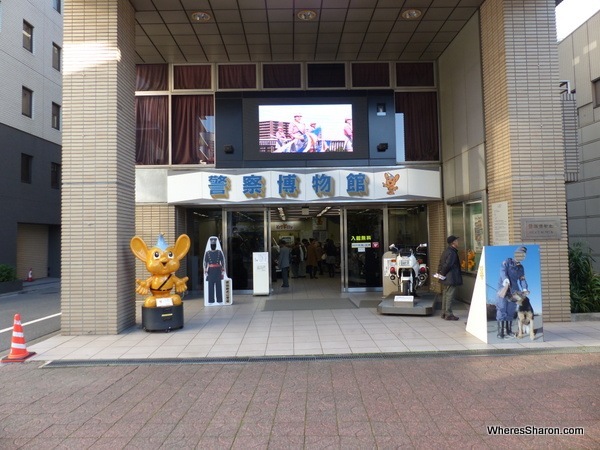
The entrance to the Tokyo Police Museum.
This museum covers the history of the Tokyo Metropolitan Police Department. There’s a small display area upstairs containing some historical artifacts like the uniform and swords (Tokyo policemen used to be armed with swords) of the first Superintendant-General of Tokyo’s first proper police force.
The cool bit for kids, though, is the chance to sit in some former police vehicles – including a helicopter! There’s also police uniforms that kids can borrow to wear for their visit. The museum is located on Ginza Road south of Kyobashi subway station on the Ginza line.
Tokyo Science Museum
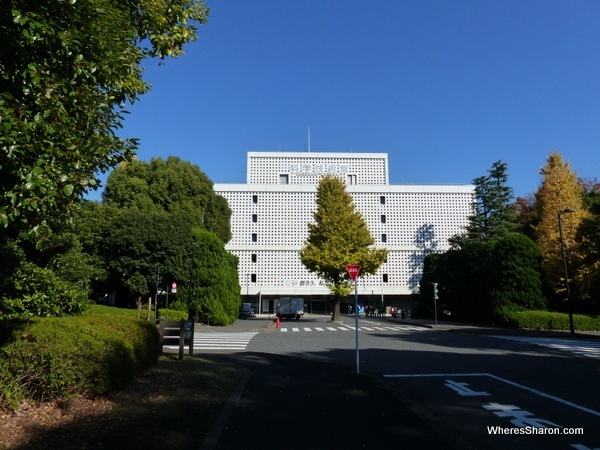
A great attraction for kids is the Science Museum, located in Kintanomaru Gardens, adjoining the East Imperial Gardens. There’s five levels of interactive exhibits and displays about science and physics. If you’ve been to a science museum before then you’ll be familiar with the concept. There’s a lot to see and do and visiting here could take a few hours.
It is also popular with school groups. When I was there in the middle of the day the place had lots of different groups wandering around so go earlier or later.
It is 720 yen for adults, 410 yen for those 13 to 18, 260 for kids aged between 4 and 12 and kids under 4 are free. Given how much there is here then this could be stunning value.
Yoyogi Park
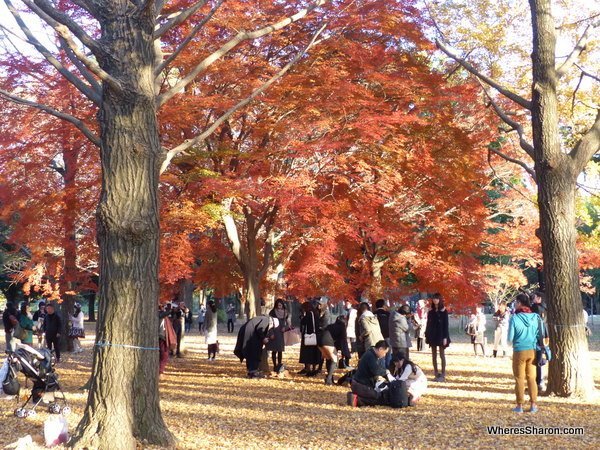
There were some more great autumn displays in Yoyogi Park, which had lots of open space and trees.
Just in case you needed another park option. Another of Tokyo’s large parks, Yoyogi Park was a former parade and inspection ground for the Japanese Army. These days its a large place to wander and play for all sorts of Tokyoites. This park is a great place for kids to run around – lots of open space and grass to do it on. The park, like the others, is popular on weekends.
There’s no central attraction or focal point, just a lot of open space and a nice place to walk around or play.
Several stations are close to Yoyogi Park: Yoyogi-koen subway station on the Chiyoda line, Meiji-jingumae subway station on the Chiyoda line and the Fukutoshin line, Yoyogi subwaystation on the Odeo line and Harajunku JR station on the JR Yamanote line.
Getting Around Tokyo
Tokyo is not a hard city to get around, except for all the people.
Footpaths are near universal, generally wide and smooth. Some small streets didn’t have them, but there were few cars on these streets, so walking on the road was not an issue. Strollers are fine and quite common. Most places had lifts for accessibility.
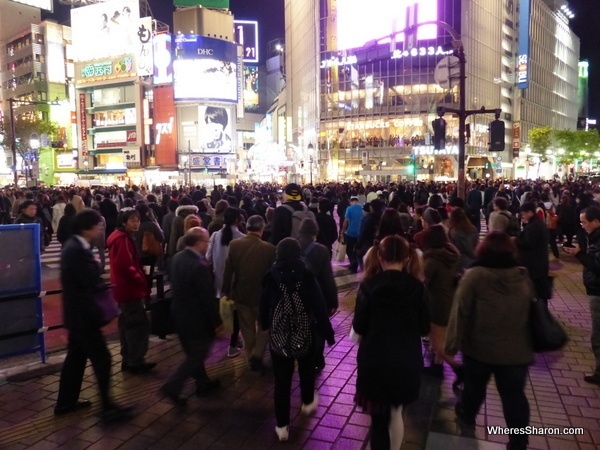
The famous Shibuya Crossing at night.
The subway makes getting places quickly easy. There are a lot of lines and apparently no place in central Tokyo is more than a 15 minutes walk from one. Strollers are fine on the subway trains, too, but in peak hour some lines get really busy.
There’s two sets of subway lines: the Tokyo Metro and the Toei lines, run by different organisations. However, they are well integrated, with common signage. Fares differ between lines and systems and using either a PASMO card or a SUICA card is the easiest way not to worry about it – both cards are accepted everywhere (including buses and many shops). These cards can be bought from vending machines and then need credit added to them (usually at the same machines).
You can buy tickets per journey (at machines at each station) but the cards made things much simpler. There’s a range of day passes as well that may or may not be good value (see the bottom of this page for more details).
In addition to the subway there is the separate Japan Rail run Yamanote line, which is a circle line going around central Tokyo. This line can get very busy but can be a good way of getting around while keeping interchanges minimised. PASMO and SUICA Cards work on this line, too.
Taxis are an expensive way to get around but if you need one there always seemed to be plenty around at all times of day. Hailing one should not be hard.
Getting to and from Narita Airport
The cheapest, direct way to get to and from Narita Airport is by bus. There are two cheap bus services, the Tokyo Shutle and the Access Narita, both of which cost 1000 yen (500 yen for children) and take about 65 minutes from the airport to Tokyo JR Station or vice versa. There’s a more expensive Airport Limousine buses as well, which go all over Tokyo.
The Access Narita buses has toilets and tickets can be bought on the bus, which makes it an easier to use and better choice. They also stop at Ginza station as well.
There’s several other options, including train services and this great page covers them in depth.
Eating in Tokyo
Tokyo has more Michelin Guide stars than any other city on earth. It is a city of good food, indeed food is one of the best parts of visiting Tokyo. Naturally, most of that food is Japanese but Tokyo is a cosmopolitan place so there’s lots of options.
The best bit is that eating out in Tokyo can be surprisingly cheap. You can often get ramen or udon or similar simple dishes for 300 yen per serve. It can also be expensive, but cheaper options are not too hard to find. Sure, it adds up for a family but in my opinion the cost of eating out compares well to other major cities.
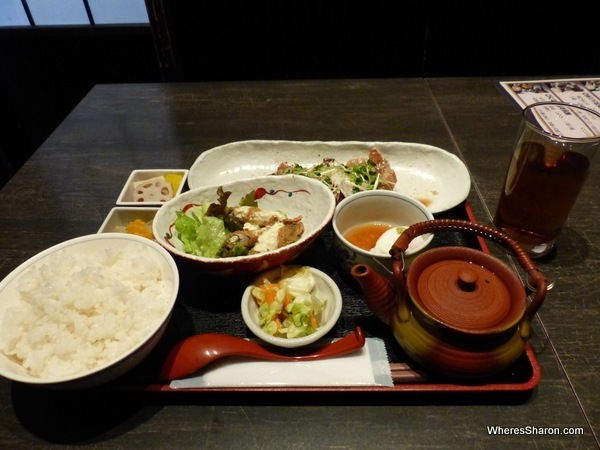
My awesome 900 yen lunch. Such great value.
For savings make lunch the main meal of the day. Many places have lunch specials or sets prior to 2pm which can be great value. For example I had a lunch set at Nidaitoyokuni that cost 900 yen and included all I could eat tuna (maguro) sashimi and rice. And it was damn tasty sashimi. Eating there for dinner would have cost a lot more.
Dinner can be more expensive but there are still many options for 1000 yen or less. Near or in any large station there were lots of options, particularly JR stations such as Tokyo, Shibuya or Shinjuku. Japanese supermarkets, department store food halls and convenience stores often slash prices on unsold goods at night – 9pm or later depending on the store – if you can wait that long.
The language barrier wasn’t too much of an issue. It helped that I knew the names of many Japanese dishes (there’s a lot of Japanese food in Melbourne and many, many, other places). However this wasn’t required. Places I went to often had picture menus and in Shibuya and Shinjuku there were often English menus as well.
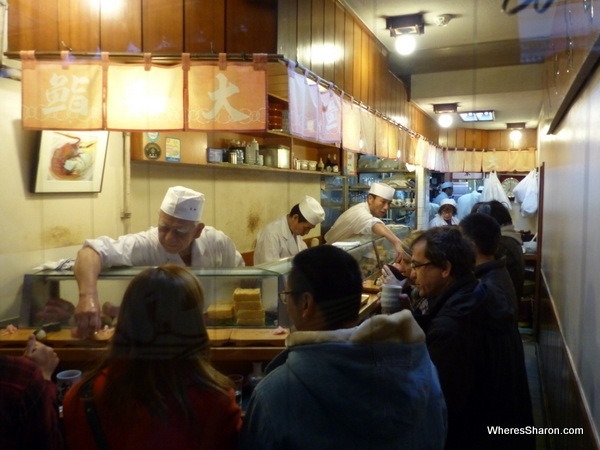
The inside of one half of Diawa Zhusi. Tokyo is full of small eateries like this.
Many cheaper places worked on a ticket system where you selected the dish, often with pictures on the buttons, on a machine, which spat out a ticket to hand to the staff who then made you the dish. No words necessary.
And if places had plastic mock ups of dishes out the front – and lots do – then you can take a picture on your phone and show the staff. It worked well when I tried it.
Tokyo Accommodation
If there was an expensive part to my trip then it was accommodation (and I tried to be cheap). We have a list of the best hotels in Tokyo for families but they are not really cheap. Apartments are perhaps the best budget-friendly family accommodation and the link above has some Air BnB options as well.
If you are without kids then there are some cheaper options. Some of these are pretty cheap but they are also not going to get you a great night’s sleep.
Manga/internet cafes
The first is the Manga Kissa: manga cafes that have tons of manga comics but are really more of an internet cafe. Many are open 24 hours and support people sleeping, or trying to, overnight.
They have become a refuge for day labourers, the unemployed, students and the not well off in general.
Prices and facilities vary widely from place to place but generally you can get 7 or 10 hour packages from 1800 yen (with extra time charged in 15 minute blocks of maybe 100 yen). For that you will get a small booth like cubicle with maybe a door or a curtain, a reclining chair or a thin mat on the floor. You may get (or rent separately) a pillow and blanket to make things more comfortable. There may be the option to purchase a shower as well.
In your cubicle you’ll get a PC connected to the internet, or a TV with a DVD player (with which you can watch the DVDs in the library) or both and there will be wifi. Plus there tends to be some food like noodle cups for purchase and free soft drinks. Also, you can read all the manga you want.
I stayed in the ComCom Manga Cafe (there’s some more details on the place in this post) near the Tsujiki Fish Market and I wasn’t too fussed about comfort as I was getting up early and already tired. I payed for a 10 hour package in a mat cubicle (which had a door) for 2200 yen. The cubicle was not long enough for me to stretch out fully, and the guy in the next cubicle smoked for a while so my clothes smelt the next day.
It was not a great night’s sleep but given the limitations it wasn’t too bad either. I was rested if not fully.
Karaoke bars and hostels
Another cheap option, which might be better, is to rent a booth at a karaoke bar. These often have private, lockable, rooms with a couch. The cheapest ones will cost not much more than 10 hours at a manga kissa but they’ll kick you out when they close (at 5am or 6am). There’s less facilities and no free drinks.
There are some backpacker hostels in Tokyo, and this is another cheaper option. I didn’t look at these but the prices I saw started at 2500 yen a night, often more depending on location and quality.
Capsule Hotels
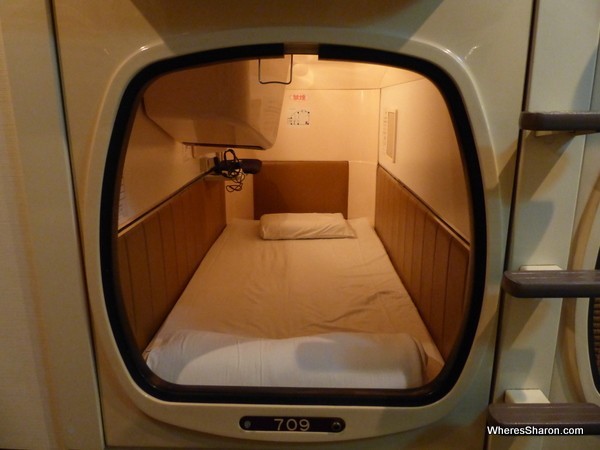
Capsule 409 was my bed for the night. Inside was surprisingly roomy.
Finally, there’s the option I used for my final two nights: capsule hotels. These places are the original “I need a cheap place to crash” option for the drunken salaryman who missed the last train. I can’t write much that hasn’t already been written other than to give my verdict: it’s a lot more expensive than an internet cafe (50% to 100% more) but a lot more comfortable.
The capsules are not huge but not as small as I thought they might be. They were comfortable for my big body, perhaps a little short (just longer than I was) but certainly wide enough. I could sit up comfortably in my capsule.
Capsule hotels can be around 3500 yen per night – sometimes more on Fridays and Saturdays. Some capsules have women’s only areas or floors and these might be cheaper. Prices go up with the amount of facilities available. Many capsule hotels will have a sento, sauna and a relaxation room with free massage chairs and one or more TVs.
In addition the capsule hotels I stayed in provided almost everything you need: pyjamas of some sort, a locker, the bed with pillow and blanket, small TV in your capsule, shampoo, body wash, eau de toilettes, shaving cream, razors and toothbrushes with some sort of powdered toothpaste on them. Most have wifi and a power point to charge something.
Here are the capsule hotels I visited if you’re after a place to start looking:
- The Century Shibuya, located at 1-19-14 Dogenzaka, Shibuya 150-0043.
-
Shinjuku Kuyakushomae Capsule Hotel, located at 1-2-5 Kabukicho, Shinjuku, Tokyo 160-0021.
Budget
Even being cheap (or trying to) in Tokyo, I still spent a bit over $100 AUD per day. The cost of that was blown out by the expensive sushi meal I had at the Tsujiki Fish Markets but even taking that out of the equation I’d still have spent around $85 per day.
Accommodation was roughly half of that, and that was including the cheap, cheap night at the Manga Kissa. This is likely to be the biggest cost of any visit and if staying with a family that applies even more.
My Vedict
I really enjoyed my time in Tokyo. I experienced a lot of Japanese clichés that I wanted to get out of my system and now I have. As I said in the introduction, Japan has given birth to so many things culinary and cultural and I found it great to be able to see them in their native habitat, so to speak.
In particular I enjoyed the food and the sentos. You can get Japanese food and hot baths outside of Japan, of course, but there was something better about them in Japan. Or maybe it was in my head.
Sadly my efforts to be as cheap as possible didn’t go quite so well. But I was still able to enjoy my time in Tokyo without the cost being too outrageous. And if you try, Tokyo has a lot to offer budget travellers.
Tokyo has whetted my appetite to see more of Japan, together with Sharon and the kids. There’s a lot to see and a lot of diverse regions. In particular I’d love to see around the Kansai region and Hokkaido. Maybe I’ll get to Niseko one day.
What’s your top tip for Tokyo?
Disclaimer: This article contains affiliate links. This means that if you make a booking after clicking on a link then we may receive a small commission at no extra cost to you. Thanks!
Tags: Japan Travel Blog





